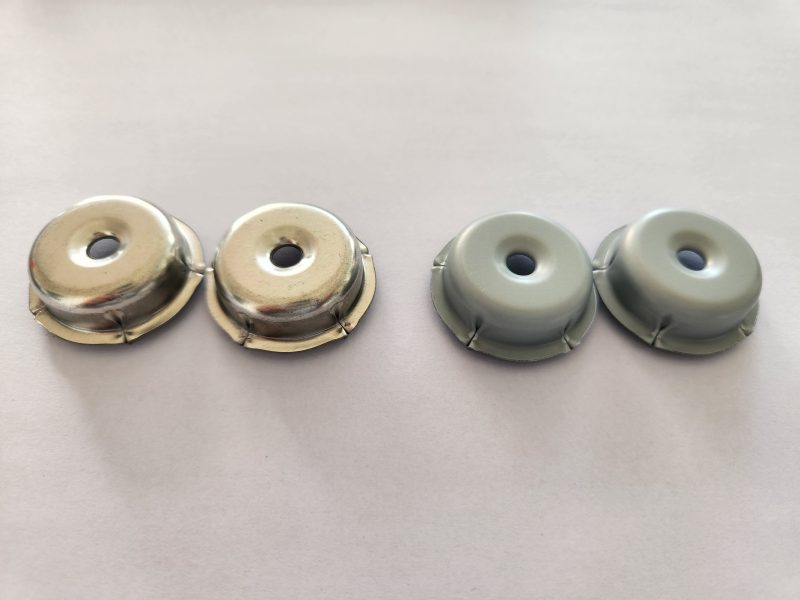
Avoiding High-Temperature Exposure for Paint Can Gaskets: Key Considerations and Solutions
High-temperature environments pose significant risks to paint can gaskets, leading to material degradation, seal failure, and potential contamination of stored paint. Whether handling latex, oil-based, or industrial coatings, understanding the limitations of gasket materials and implementing preventive measures is critical for maintaining paint quality and safety.
The Impact of Heat on Paint Can Gaskets
Gaskets serve as barriers between paint can lids and containers, preventing air, moisture, and contaminants from entering. However, excessive heat alters their physical properties, compromising their effectiveness. For instance, latex paints are particularly vulnerable to freezing, but prolonged exposure to high temperatures can also cause the water-based components to separate, forming a lumpy or curdled consistency. Oil-based paints, while more heat-resistant, may still suffer from accelerated oxidation or solvent evaporation if stored improperly.
Gasket materials themselves are not immune to thermal stress. Standard rubber or foam gaskets may soften, deform, or lose elasticity when exposed to temperatures beyond their designed range. This deformation creates gaps, allowing air to enter and paint to dry out or form a skin. In extreme cases, heat can cause chemical breakdown, releasing harmful fumes or altering the paint’s composition.
Identifying High-Temperature-Resistant Gasket Materials
To mitigate risks, selecting gaskets engineered for thermal stability is essential. Several materials excel in high-heat applications:
Silicone-Based Gaskets
Silicone is a synthetic elastomer renowned for its exceptional thermal resistance, maintaining flexibility and sealing capacity from -60°C to 230°C. Its inert nature also makes it resistant to oils, chemicals, and UV radiation, making it ideal for paint storage in environments with fluctuating temperatures. Silicone gaskets are commonly used in industrial ovens, automotive engines, and aerospace applications, where durability under extreme conditions is non-negotiable.
Fluorosilicone and Epichlorohydrin Sponge
For environments with intermittent temperature spikes, fluorosilicone sponge gaskets offer enhanced weatherability and compression set resistance. These materials withstand continuous exposure up to 260°C and resist swelling from contact with hydrocarbons, alcohols, and solvents. Epichlorohydrin sponge, another high-performance option, maintains integrity from -30°C to 300°C, making it suitable for both cold and hot storage conditions.
Fiber-Reinforced Composite Gaskets
Composite gaskets, combining synthetic fibers with high-temperature binders like nitrile or HNBR (hydrogenated nitrile butadiene rubber), provide robust sealing in harsh industrial settings. These materials resist creep relaxation and cold flow, ensuring long-term performance in applications involving saturated steam, hot oils, or high-pressure systems. Their fire-resistant properties further enhance safety in environments prone to thermal runaway.
Best Practices for Storing Paint in High-Temperature Zones
Even with heat-resistant gaskets, proper storage techniques are vital to preserving paint quality:
Optimal Storage Conditions
Store paint cans in climate-controlled spaces, such as interior rooms with stable temperatures and humidity levels. Avoid garages, attics, or basements, where temperatures can fluctuate dramatically. If indoor storage isn’t feasible, use insulated containers or shelves to shield cans from direct sunlight and radiant heat sources.
Proper Sealing Techniques
Ensure lids are tightly secured to prevent air infiltration. After closing, gently tap the rim with a rubber mallet to create a vacuum seal. For added protection, invert the can briefly to force paint into the rim area, eliminating air pockets. However, store cans upright long-term to prevent leaks.
Regular Inspection and Maintenance
Periodically check gaskets for signs of wear, such as cracking, hardening, or compression set. Replace damaged gaskets immediately to maintain an airtight seal. For long-term storage, consider transferring paint to smaller containers to reduce air exposure, as half-empty cans are more prone to skinning and degradation.
Conclusion
High-temperature environments demand proactive measures to safeguard paint can gaskets and the contents they protect. By selecting thermally stable materials, optimizing storage conditions, and adhering to proper sealing practices, users can extend the shelf life of paints and prevent costly waste. Whether storing artist-grade oils or industrial coatings, understanding the interplay between temperature and gasket performance is key to achieving reliable, long-lasting results.
